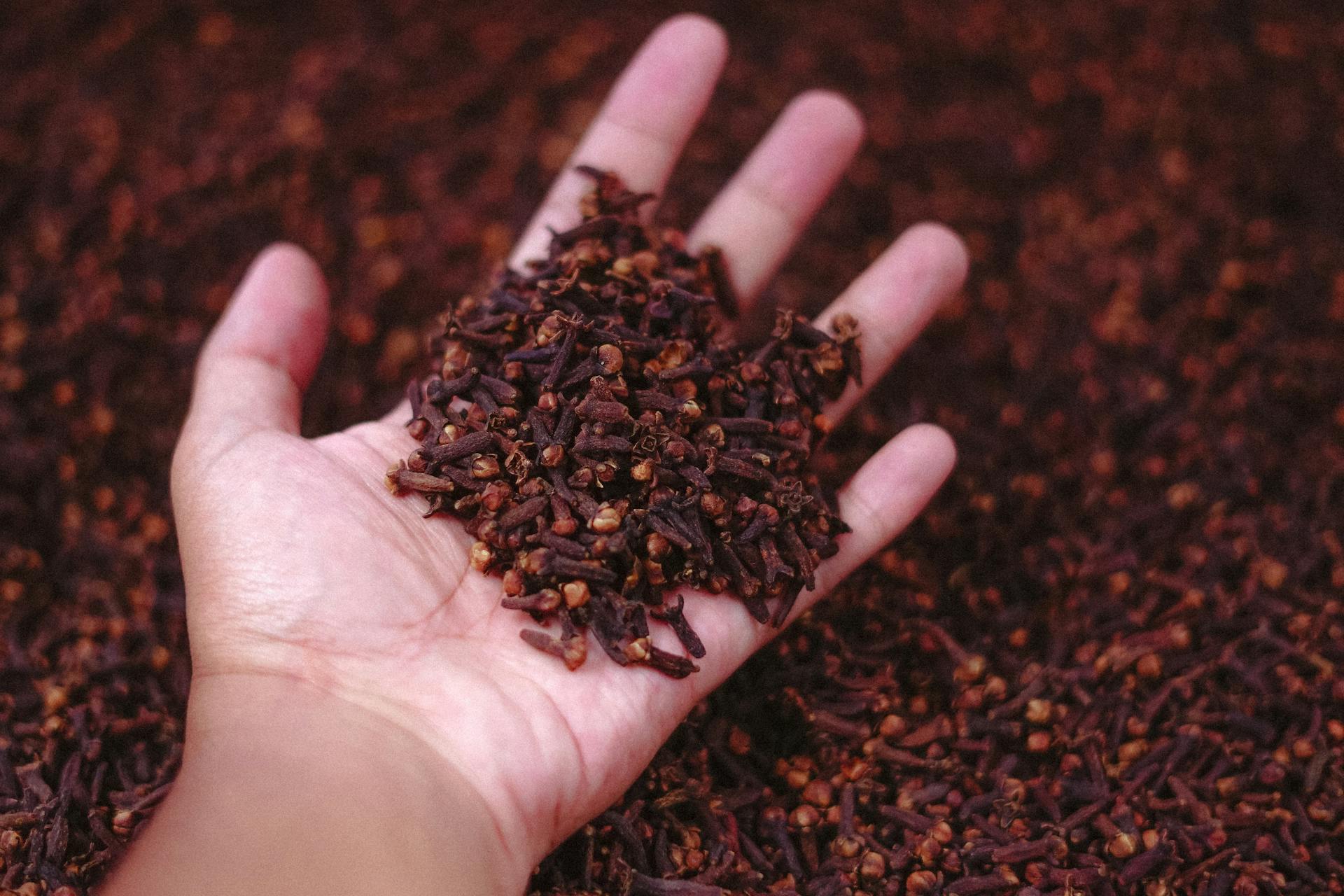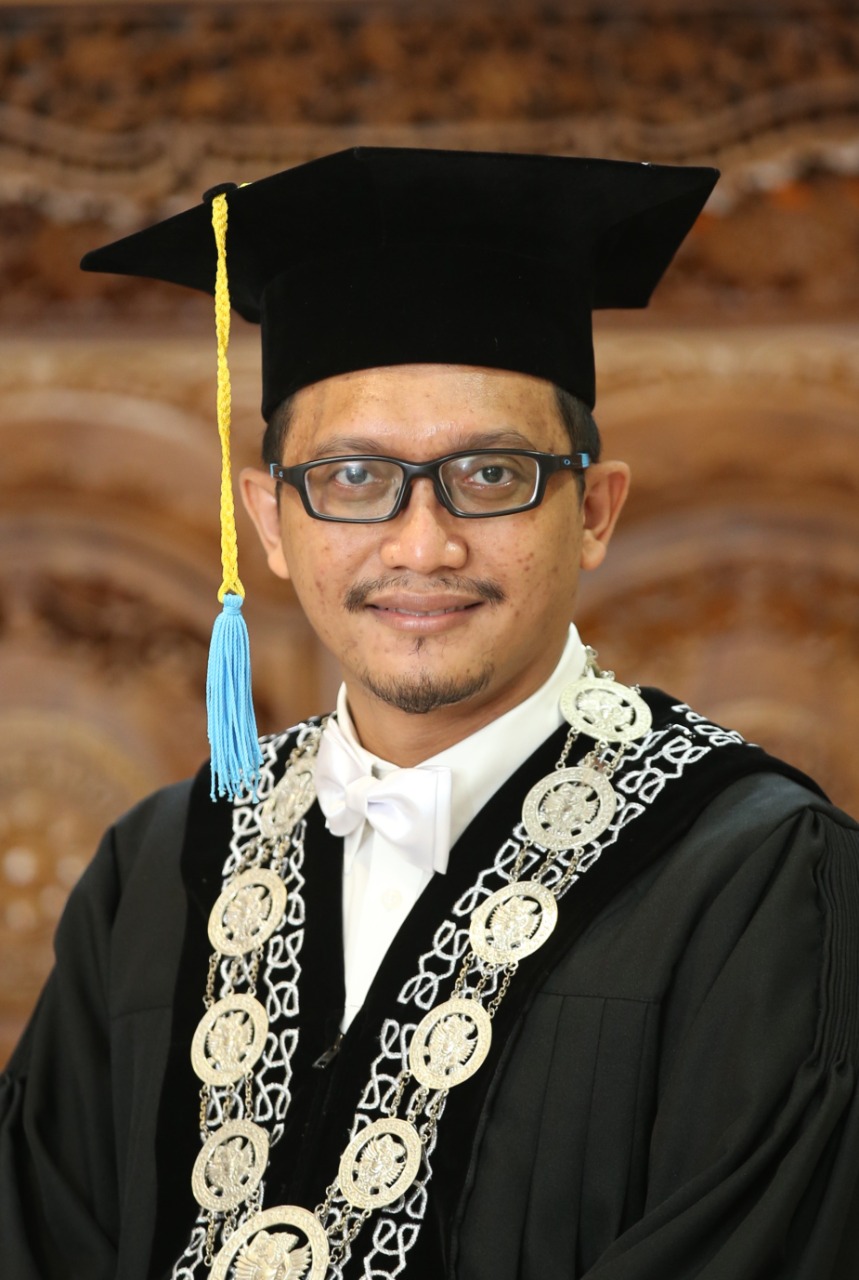Effects of Clove Leaf Essential Oil (Syzygium aromaticum) in Inhibiting Biofilm Formation on Candida albicans Isolate

Downloads
Highlights:
- Candida albicans is capable of forming biofilm, which can lead to resistance to antifungal treatments.
Clove leaf essential oil, which can inhibit biofilm formation, making it a potential anti-biofilm agent.
Abstract
Introduction: Candida albicans (C. albicans) has a virulence factor, like biofilm formation. Biofilm is a three-dimensional structure that plays a role in antimicrobial resistance, thus requiring antibiofilm agents to address this problem. One of them is Clove leaf (S. aromaticum). S. aromaticum has active phytochemicals (eugenol, β-caryophyllene, and others) that can inhibit biofilm formation in microorganisms, including fungi. This study aimed to prove the effect and to find a concentration of Clove leaf essential oil that affects the biofilm formation of C. albicans isolate.
Methods: This study used a microtiter plate with a two-fold dilution technique. The tested concentrations were 6.25%, 3.125%, and 1.5625%. The positive control was 200 µL of C. albicans biofilm suspension, and the negative control was 200 µL of tryptic soy broth media, and all were repeated four times. The biofilm was observed using crystal violet and evaluated using optical density. The data was analyzed statistically using the International Business Machines Corporation (IBM) Statistical Package for the Social Sciences (SPSS) version 26, with a p<0.05 considered statistically significant.
Results: The Optical density (O.D.) of the isolate was 2.039, while the negative control was 0.349, indicating that the isolate was a strong biofilm former. The concentrations of 6.25%, 3.125%, and 1.5625% showed inhibition percentages of 8.533%, 17.214%, and 8.484%, respectively. The Optical density was found to be normally distributed but not homogeneous p>0.05, The Kruskal-Wallis’s test was significant, and the Mann-Whitney test was not significant between test groups and positive control.
Conclusion: Clove leaf essential oil has inhibitory effects on C. albicans biofilm isolates. However, statistically, there was no significant difference between the test groups and the positive control.
Puspitasari A, Kawilarang AP, Ervianty E, et al. Profil Pasien Baru Kandidiasis. Berk Ilmu Kesehat Kulit dan Kelamin 2019; 31: 24–34. [Journal]
Wahyuningsih R, Adawiyah R, Sjam R, et al. Serious Fungal Disease Incidence and Prevalence in Indonesia. Mycoses 2021; 64: 1203–1212. [PubMed]
Wall G, Montelongo-Jauregui D, Bonifacio BV, et al. Candida albicans Biofilm Growth and Dispersal: Contributions to Pathogenesis. Curr Opin Microbiol 2019; 52: 1–6. [PubMed]
Prakoeswa F, Pramuningtyas R, Dimawan R. The Epidemiologic and Sociodemographic Features of Superficial Fungal Infection among Children in East Java Suburban Public Hospital. Berk Ilmu Kesehat Kulit dan Kelamin 2022; 34: 120–124. [Journal]
Femilian A, Masuku WDM, Ayuningtyas NF, et al. Clinical Appearance of Acute Pseudomembranous Candidiasis in Children and the Importance of Good Communication, Information and Education to Patients: A Case Report. Maj Kedokt Gigi 2022; 55: 105–108. [Journal]
Quindós G, Marcos-Arias C, San-Millán R, et al. The Continuous Changes in the Aetiology and Epidemiology of Invasive Candidiasis: From Familiar Candida albicans to Multiresistant Candida auris. Int Microbiol 2018; 21: 107–119. [PubMed]
Jannah SN, Arfijanto MV, Rusli M, et al. Sepsis: Antibiotic Resistances of Gram-Positive and Gram-Negative Bacterial in a Tertiary Care Hospital. JUXTA J Ilm Mhs Kedokt Univ Airlangga 2021; 12: 29–37. [Journal]
Nugraha A, Savitri ED, Parmadiati AE, et al. Prevalence of Candida Species in Oral Candidiasis and Correlation with CD4+ Count in HIV/AIDS Patients at Surabaya, Indonesia. J Int Dent Med Res 2018; 11: 81–85. [ResearchGate]
Wardiana M, Astindari, Ervianti E, et al. Antifungal Activity of Rosemary (Rosmarinus officinalis L.) Emulsion Gel Compared to Nystatin on Candida albicans Stored Isolate from HIV/AIDS Patients with Oral Candidiasis. Berk Ilmu Kesehat Kulit dan Kelamin 2023; 35: 88–92. [Journal]
Pereira R, Fontenelle RODS, de Brito EHS, et al. Biofilm of Candida albicans: Formation, Regulation and Resistance. J Appl Microbiol 2021; 131: 11–22. [PubMed]
Lohse MB, Gulati M, Johnson AD, et al. Development and Regulation of Single- and Multi-Species Candida albicans Biofilms. Nat Rev Microbiol 2018; 16: 19–31. [PubMed]
Batiha GE-S, Alkazmi LM, Wasef LG, et al. Syzygium aromaticum L. (Myrtaceae): Traditional Uses, Bioactive Chemical Constituents, Pharmacological and Toxicological Activities. Biomolecules; 10. January 2020. [PubMed]
Yassin MT, Mostafa AAF, Al-Askar AA. In Vitro Anticandidal Potency of Syzygium aromaticum (Clove) Extracts against Vaginal Candidiasis. BMC Complement Med Ther 2020; 20: 25. [Journal]
Haro-González JN, Castillo-Herrera GA, Martínez-Velázquez M, et al. Clove Essential Oil (Syzygium aromaticum L. Myrtaceae): Extraction, Chemical Composition, Food Applications, and Essential Bioactivity for Human Health. Molecules; 26. October 2021. [PubMed]
Mouta LFGL, Marques RS, Koga-Ito CY, et al. Cymbopogon citratus Essential Oil Increases the Effect of Digluconate Chlorhexidine on Microcosm Biofilms. Pathog (Basel, Switzerland); 11. September 2022. [PubMed]
Sahal G, Woerdenbag HJ, Hinrichs WLJ, et al. Antifungal and Biofilm Inhibitory Effect of Cymbopogon citratus (Lemongrass) Essential Oil on Biofilm Forming by Candida tropicalis Isolates; An In Vitro Study. J Ethnopharmacol 2020; 246: 112188. [PubMed]
Rahman FHF, Alimsardjono L, Zakaria S. In Vitro Antimicrobial Potency of Lemon Fruit (Citrus limon) Extract on Salmonella typhi. JUXTA J Ilm Mhs Kedokt Univ Airlangga 2020; 11: 69–73. [Journal]
Harningtyas CD, Murtiastutik D, Citrashanty I, et al. Comparison of Antifungal Activity of Fluconazole and Clove Leaf Essential Oil on Candida Species Isolate in HIV/AIDS Patients with Oral Candidiasis. Int J Health Sci (Qassim) 2022; 6: 3067–3077. [Journal]
Hastjarjo TD. Rancangan Eksperimen-Kuasi. Bul Psikol 2019; 27: 187–203. [Journal]
Navarro P, Alemán I, Sandoval C, et al. Statistical Testing Methods for Data Analysis in Dental Morphology. International Journal of Morphology 2020; 38: 1317–1324. [Journal]
Gosselin RD. Guidelines on Statistics for Researchers Using Laboratory Animals: The Essentials. Lab Anim 2019; 53: 28–42. [PubMed]
Nie NH, Bent DH, Hull CH. Statistical Package for the Social Sciences (SPSS), https://www.ibm.com/support/pages/downloading-ibm-spss-statistics-26 (2018).
Rivani E, Arfijanto MV, Widodo ADW. Vancomycin for Methicillin-Resistant Staphylococcus aureus Biofilm Eradication is Associated with the Emergence of Heterogeneous Vancomycin Intermediate Staphylococcus aureus. Int J Health Sci (Qassim) 2022; 6: 811–818. [Journal]
Kačániová M, Galovičová L, Borotová P, et al. Chemical Composition, In Vitro and In Situ Antimicrobial and Antibiofilm Activities of Syzygium aromaticum (Clove) Essential Oil. Plants (Basel, Switzerland); 10. October 2021. [PubMed]
Shamim A, Ali A, Iqbal Z, et al. Natural Medicine a Promising Candidate in Combating Microbial Biofilm. Antibiot (Basel, Switzerland); 12. February 2023. [PubMed]
Hamzah H, Yudhawan I, Rasdianah N, et al. Clove Oil Has the Activity to Inhibit Middle, Maturation and Degradation Phase of Candida tropicalis Biofilm Formation. Biointerface Res Appl Chem; 12. September 2021. [ResearchGate]
Casagrande Pierantoni D, Corte L, Casadevall A, et al. How Does Temperature Trigger Biofilm Adhesion and Growth in Candida albicans and Two Non-Candida albicans Candida Species? Mycoses 2021; 64: 1412–1421. [PubMed]
Motaung TE, Peremore C, Wingfield B, et al. Plant-Associated Fungal Biofilms-Knowns and Unknowns. FEMS Microbiol Ecol; 96. November 2020. [PubMed]
Latka A, Drulis-Kawa Z. Advantages and Limitations of Microtiter Biofilm Assays in the Model of Antibiofilm Activity of Klebsiella phage KP34 and Its Depolymerase. Sci Rep 2020; 10: 20338. [PubMed]
Copyright (c) 2024 Achmad Rifai, Pepy Dwi Endraswari, Yuani Setiawati, Eko Budi Koendhori

This work is licensed under a Creative Commons Attribution-ShareAlike 4.0 International License.
1. The journal allows the author to hold the copyright of the article without restrictions.
2. The journal allows the author(s) to retain publishing rights without restrictions
3. The formal legal aspect of journal publication accessibility refers to Creative Commons Atribution-Share Alike 4.0 (CC BY-SA).




























